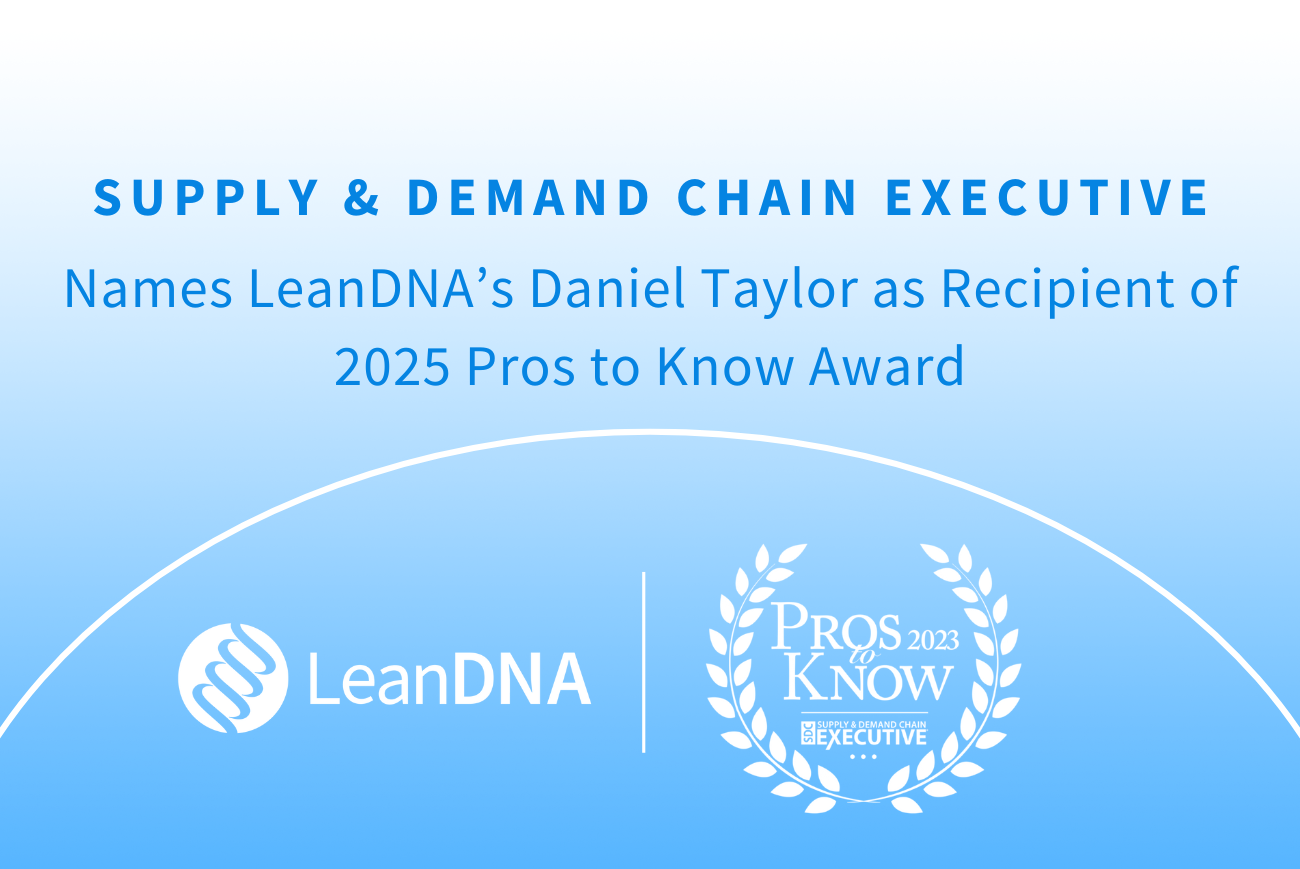Dealing with a shortage is no small task. While there is no “quick fix” for such a large problem, there are many ways manufacturers can prevent them from happening.
Here are a few ways to prevent and reduce the risk of the most disruptive out-of-stock situations.
1. Expedite Parts
Expediting—when a company pays extra fees for faster delivery and quality assurance—is typically used for larger projects where a delay in delivery could be detrimental to the manufacturing process and the company itself. This is the standard way companies are dealing with shortages today. While this method can be costly and uncertain, many manufacturers choose this because they believe the cost of expediting the parts outweighs the cost of late deliveries to customers.
2. Improve Forecasting
To more accurately forecast demand, manufacturers use a Sales, Inventory, and Operations Planning (SIOP) process to determine what potential future demand they will be facing. The SIOP process is the regular update of a company’s operating plan, which can occur monthly or more frequently, as needed. Improved forecasting can eliminate uncertainty by helping a manufacturer and their suppliers plan for when they'll need parts, which can help reduce lead times by making more precise short-term predictions. Manufacturers may know how much stock they have now, but it’s more challenging to predict a week, a month, or even several months into the future. Planning teams can utilize historical data to predict what might happen in the near future which can help them avoid incurring a stockout.
3. Improve Lead Time Accuracy
Knowing how to calculate lead time is the first step to reducing it—the formula is [Lead Time (LT) = Supply Delay (SD) + Reordering Delay (RD)]. Supply delay is the time between a customer purchasing something and the supplier filling that order, whereas reordering delay is the time between an order being fulfilled and the repurchase of that order. Once lead time is calculated, there are two ways to improve the accuracy.
First, communicate and stay in touch with the supplier. Not only will the buyer be able to ensure the supplier is on track, but they can aid in any problems that may arise on their end instead of waiting for updates. Secondly, a company can take into consideration two other components of lead time, Transit Time and Receiving Time. Transit time is the amount of time between picking up an order and the delivery to its destination whereas receiving time is the amount of time a company allots for goods to be received and put in the appropriate stock location once parts hit the docks. Using domestic suppliers is a solution to reducing Transit Time as well as shipping costs as goods only need to travel across the US. Complex and large, bulky items will have a much higher Receiving Time than small parts like nuts and bolts. The processes used for receiving the parts and handling the materials will also have an effect on the Receiving Time.
All of these calculations are critical in determining when the manufacturing team will have access to the needed parts. Accurate lead times are needed for accurate scheduling which leads to reduced chances of missing parts. Having good lead times and generally cleaner data helps manufacturers prevent shortages.
4. Eliminate Single Point Failures
Having a single provider of a material or product means that if something happens to that supply, the company is out of luck—factories will be bogged down with shortages, brick and mortar stores will be out of stock, and online retailers will be backordered. To ensure backup in case of an unexpected delay, manufacturers should dual-source their suppliers or ensure they have multiple sources of supply. This means if one supplier’s factory faces an unexpected disruption, the buyer will still have other ways of getting the items that they need.
5. Develop a Shortage Attack Team (or better shortage management processes)
Supply disruptions are inevitable, developing a shortage attack team is key to navigating them quickly and efficiently. A company can also look at other methods for better shortage management, such as investing in technology that can help prevent or better manage stockouts or reviewing current management techniques to evaluate areas of improvement. This can include improving communication between shortage attack team members or increasing the accuracy of data analysis.
6. Improve Supplier Collaboration
It is important to have good communication with suppliers for many reasons. Having a good relationship with suppliers can encourage mutual collaboration and create benefits for both parties. One method a supplier might agree to is holding their own finished goods for when their buyers need them. If a supplier is holding their own level of safety stock, they can protect themselves and their customers against larger variations in demand. Alternatively, if the supplier is only making the product when it is ordered, they may not have the ability to fulfill the buyer’s order in time if there is a spike in demand. For more information on supplier collaboration, check out this article “How to Deal With Material Shortage Using Analytics and Collaboration.”
7. Ensure accurate inventory data
Manufacturers should ensure that they are cycle counting regularly. Perpetually counting inventory reduces the manual process and time cost of physical inventory counting. They should also confirm that their receiving and material handling processes are efficient and well documented. Without an accurate count of inventory levels, stock shortages can sneak up much easier.
8. Regularly update PFEP
Companies should regularly update their Plan For Every Part (PFEP). The PFEP connects all points of an organization to increase the total visibility into factory operations. It is essential for this plan to be up-to-date. If companies don't have the time or resources to complete a full PFEP, they can start with an ABC analysis, so they know what their highest focus parts should be. This inventory categorization technique divides inventory into three groups—allowing them to focus on higher priority materials and products. Lastly, buyers can also update their order policy to match the levels of demand their company is experiencing and predicting.
Conclusion
Whatever the method of prevention, getting the right parts at the right time is key to keeping products flowing through the factory and getting delivered to customers on time. To better understand what causes shortages or stockouts, check out our blog “Shortage vs. Stockout: Understanding the Difference.”
AVOID COSTLY DISRUPTIONS AND LATE DELIVERIES WITH AUTOMATED SHORTAGE MANAGEMENT
LeanDNA automates and standardizes your shortage reporting to save teams hours of manual work. Get total visibility into past, present, and future inventory levels to alleviate shortages from one site with inventory to another.
FAQ
What is the meaning of "expedite"?
The definition of expedite is to do something quicker than was originally scheduled. A synonym is to accelerate or rush something, but the term ‘expedite’ is typically used in the business world and not in everyday speech.
How does one expedite parts?
Expediting parts is a simple process from the customer perspective; they call their supplier and ask them if they can provide an earlier delivery date for the parts. Suppliers may have a formal system in place for an expedite request if this is common with their customers. Typically the customer will ask for their order to be expedited first, and the supplier may then confirm this request with an expedite fee or offer a better delivery date at no extra cost.
Once agreed upon, the onus is on the supplier of the part to fit the expedited order into their schedule. If the supplier cannot meet the new schedule, the customer may ask for some or all of the expedite fee back.
Is excess demand the same as a shortage?
Yes, a shortage is when you have more demand than you have supply.
What situation can lead to excess demand?
Excess demand can occur because of increased customer desire for your product, a competitor being unable to fulfill orders, or you simply don’t have enough supply to fulfill the orders you do have because of scheduling issues, quality issues, or other supply chain disruptions.
Are you still falling victim to stockouts?
To resolve shortage and stockout issues, you must learn how to avoid, adapt, and absorb the impacts – however, handling these supply chain disruptions varies between the two.
Learn how to handle shortages vs stockouts.
There’s no escaping supply chain disruptions in the shortage economy.
Although there are many ways to manage supply chain disruptions, they do still happen. The key is recognizing the need for change to minimize the impact of shortages and improve on-time customer delivery.
See how leading manufacturers are using technology to improve supply chain strategies.




